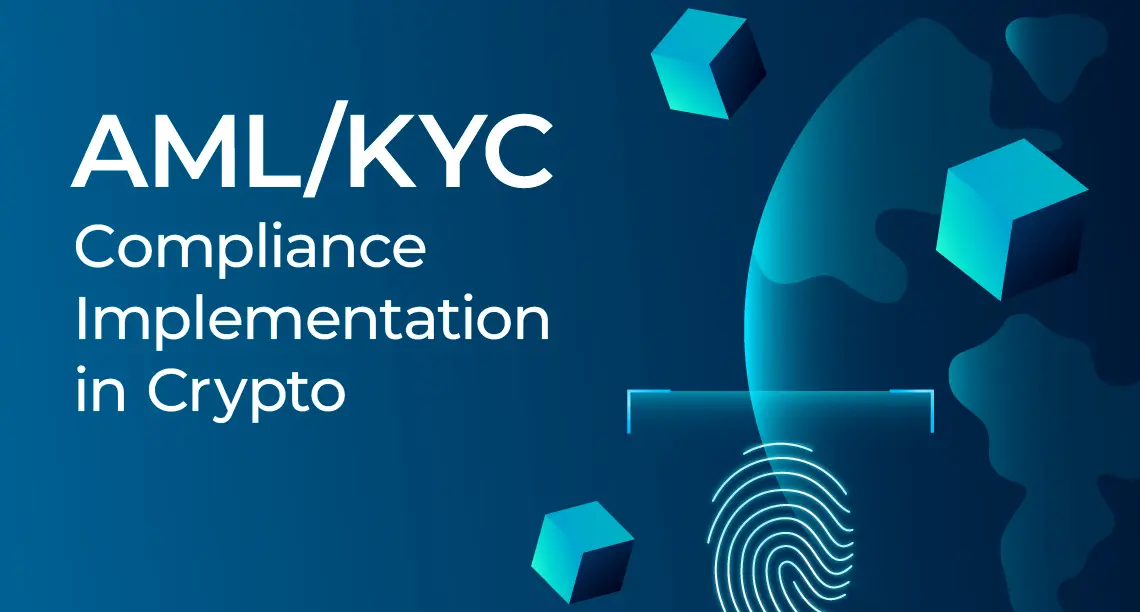AML & KYC: How Modern Compliance Standards Protect Financial Markets
30.07.2025

As digitalization accelerates, the growth of the online economy and the globalization of financial flows are increasing demands for transparency and security each year. Two key tools in meeting these demands are AML (Anti‑Money Laundering) and KYC (Know Your Customer). These terms are no longer limited to legal or compliance teams — today, they directly impact any business handling financial transactions, as well as individuals using banking or cryptocurrency services.
Understanding these processes not only helps businesses stay compliant with evolving regulations but also gives users confidence and protection in an increasingly sophisticated financial landscape.
What Is AML? A Legal Shield Against Financial Crime
AML stands for Anti‑Money Laundering — a set of rules and practices designed to detect, prevent, and stop efforts to legalise money obtained illegally. These measures apply across the full spectrum of financial activity: from small online banking transactions to large international payments.
Money laundering typically involves disguising illicit funds as lawful income, often through multi-layered schemes like shell companies, transaction splitting, offshore accounts, or cryptocurrency. Without effective AML systems, such schemes can go undetected, posing serious risks to economic stability and global security.
An AML programme includes far more than monitoring suspicious transactions. It requires a clear internal compliance policy, staff training, collaboration with regulators, and strict adherence to financial control standards. In other words, AML is a comprehensive compliance strategy—not just a technical task.
What Is KYC? Why “Know Your Customer” Is Not Just a Formality
While AML addresses suspicious activity that’s already underway, KYC acts as a preventive barrier. The concept of Know Your Customer involves verifying a person’s identity and assessing their legitimacy before granting financial service access.
In today’s digital economy, KYC procedures are now commonplace. Banks, brokers, payment providers, cryptocurrency exchanges, microlenders, and even e-commerce platforms require verification. This often involves presenting a passport or ID, proof of address, and a selfie or biometric scan.
KYC may seem burdensome — especially for privacy-conscious individuals — but it plays a critical role in reducing fraud, safeguarding platforms, and ensuring a secure environment for legitimate users.
Importantly, KYC isn't always a one-off process. Based on a user's risk profile and activity level, verification may be repeated periodically or triggered automatically through system behavior monitoring.
How AML and KYC Work Together: A Unified Compliance System

Although AML and KYC serve different purposes, they are closely interlinked. KYC lays the foundation by providing verified customer data and building a financial profile. This enables systems to identify anomalies, track unusual behavior, and react promptly.
For example, if a new user suddenly starts sending large international transfers that don’t match their declared profile, the AML system should flag it and notify compliance officers. Thanks to data collected during KYC, that alert can be assessed quickly and accurately.
In essence, AML and KYC are two halves of one compliance framework — and only together do they deliver truly effective protection.
Regulatory Foundations: What Authorities Require
Worldwide, anti‑money laundering and counter‑terrorism regulations are coordinated by the FATF (Financial Action Task Force), which issues international standards for national regulators.
In the United States, key legislation includes the Bank Secrecy Act and the USA PATRIOT Act, overseen by FinCEN. In the United Kingdom, the FCA enforces the Money Laundering Regulations 2017 and related guidance. In Canada, compliance is governed by the PCMLTFA and monitored by FINTRAC. In the European Union, countries follow the 4th, 5th, and 6th AML Directives (4AMLD, 5AMLD, 6AMLD).
These regulations require financial and regulated entities to perform due diligence, assess customer risk, track transactions, and report suspicious activities to authorities.
AML and KYC in Cryptocurrency: A 21st‑Century Challenge
The rise of cryptocurrency and decentralized finance (DeFi) poses new challenges for traditional compliance frameworks. Crypto exchanges and wallets often operate without central oversight, enabling users to transact anonymously — complicating enforcement.
As a result, regulators in many jurisdictions now require full AML and KYC compliance for crypto platforms. Non-compliance can result in fines, operational restrictions, or reputational harm.
The crypto industry is adapting quickly—deploying blockchain analytics tools to flag illicit wallets, monitoring transaction patterns, and offering remote identity verification services. These innovations help bridge the gap between decentralization and regulatory requirements.
Emerging Technologies in AML and KYC: Automation and AI
Today’s compliance systems are increasingly intelligent. Manual ID checks are being replaced by eKYC solutions that use biometrics, digital IDs, and integrations with government databases. These tools streamline onboarding, reduce errors, and bolster security.
AI and machine learning play a growing role in analyzing behavior and spotting risky transactions in real time.
The risk‑based approach—endorsed by regulators—is also gaining traction. It enables platforms to target high‑risk users and transactions while reducing unnecessary friction for low-risk customers.
Why AML and KYC Matter to You
Many users find KYC inconvenient. However, these procedures protect you as much as they safeguard institutions. Platforms that follow AML/KYC rules tend to be more secure and less susceptible to fraud, hacks, or regulatory sanctions.
Companies with strong compliance policies clearly value their reputation, follow the law, block malicious activity, and strive to prevent account freezes or financial loss for honest customers.
The Future of AML and KYC: Stricter Oversight and Growing Trust
As financial abuse becomes more sophisticated, global standards will continue to tighten. In coming years, we can expect stricter identity controls, increased transaction transparency, and enhanced cooperation between platforms and regulators.
At the same time, technology is making AML/KYC easier and less intrusive. Automation, biometric IDs, cloud-based systems, and international interoperability are transforming compliance into a seamless experience—not just a regulatory checkbox.
Bottom line: AML and KYC are not about restricting freedom—they’re about building a safe and trustworthy financial ecosystem where legitimate users can transact confidently and illegal schemes can’t thrive.